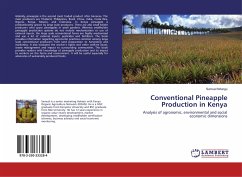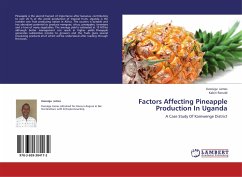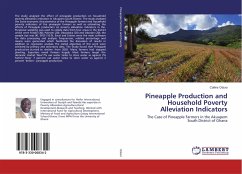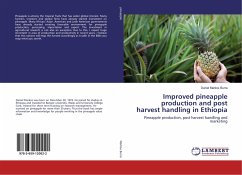
Conventional Pineapple Production in Kenya
Analysis of agronomic, environmental and social economic dimensions
Versandkostenfrei!
Versandfertig in 6-10 Tagen
24,99 €
inkl. MwSt.

PAYBACK Punkte
12 °P sammeln!
Globally, pineapple is the second most traded product after bananas. The main producers are Thailand, Philippines, Brazil, China, India, Costa Rica, Nigeria, Kenya, Mexico, and Indonesia. In Kenya pineapple is predominantly grown by large scale producers. There are also small holder producers who grow pineapples in small gardens. Whereas smallholder pineapple production systems do not include mechanization or use of external inputs, the large scale conventional farms are highly mechanized and use a lot of external inputs; pesticides and fertilizers. The book provides information regarding agro...
Globally, pineapple is the second most traded product after bananas. The main producers are Thailand, Philippines, Brazil, China, India, Costa Rica, Nigeria, Kenya, Mexico, and Indonesia. In Kenya pineapple is predominantly grown by large scale producers. There are also small holder producers who grow pineapples in small gardens. Whereas smallholder pineapple production systems do not include mechanization or use of external inputs, the large scale conventional farms are highly mechanized and use a lot of external inputs; pesticides and fertilizers. The book provides information regarding agronomic practices common among large scale conventional producers from land preparation to harvesting and marketing. It also evaluates the worker's rights and other welfare issues, waste management and impact to surrounding communities. This book provides readers with knowledge of pineapple production and its impact to workers on the farms and environment. It will be useful especially for advocates of sustainably produced foods.












